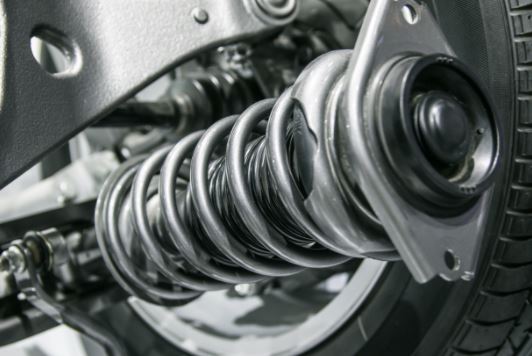Poor road conditions and worn tyres can contribute to the uneven weight distribution of your vehicle. Wheel balancing is essential for your safety.
PHONE FREE
0808 271 4123
OR BUY NOW
Wheel Balancing
An important aspect of tyre maintenance is ensuring the wheels are balanced. Wheel balancing involves adding weights to the rims to ensure the weight is distributed evenly across the wheels, but why does this matter?
Correctly balanced wheels provide a smooth ride for motorists and are important for ensuring safety on the road. There are several ways that wheels can lose their balance, but do you know the tell-tale signs? Here we look at what the symptoms of unbalanced wheels are:
Vibrations
One of the most common signs of unbalanced wheels is a vibration in the steering wheel when driving. Of course there are other reasons why your car may shake, but typically if your steering wheel shakes when you reach speeds of 50 - 55 MPH getting worse at around 60 - 65 MPH later disappearing at speeds higher, then you have unbalanced wheels.
Tyres are the only part of a vehicle which are in contact with the road. It is important that the weight of the vehicle is evenly distributed across the entire width of each tyre. If a wheel is not correctly balanced, then one side of a wheel will carry more of the vehicles weight leading to the wheel rotating unevenly forcing a vibration to be felt throughout the car.

Uneven or excessive tread wear
Perhaps one of the easiest ways to identify unbalanced wheels is by looking for signs of uneven or excessive tread wear.
Uneven tread wear will be displayed as one area of the tyres tread having already worn out. In balanced tyres we would expect to see the treads wearing evenly throughout the circumference and across the width of the tyre. If only one section of the tyres tread is worn whilst the remainder of the treads look to be in good condition still, this is indicative of unbalanced wheels.
If you stand in front of your car a few feet away and look at the front tyres you would expect to see the full diameter of the tyre in contact with the road. If one side appears slightly higher than the other, then the wheel is not balanced correctly. As the tyres rotate at speed the uneven motion will cause the vibration to be felt and the tyre tread to wear out quickly.
Tyres that wear unevenly compromise the structural integrity of the tyre which could lead to a blowout. This is because the tyre is wearing thin in one place weakening the rubber.

Steering problems
As discussed above, an uneven rotation of the wheels can be felt through the steering wheel as a vibration. This can be problematic as it can impact your ability to steer in a particular direction if needed.
Bad Shock Absorbers and Wheel Bearings
The uneven rotation of unbalanced tyres can also affect your shock absorbers and wheel bearings too.
Wheel bearings sit in the wheel hub and aid the rotation of a car's wheels with minimum friction. If a wheel is incorrectly balanced this will add excessive pressure to the wheel bearings causing a loud noise from the tyre when driving at high speeds. Motorists may also notice the steering wheel feels loose meaning less control of the vehicle for the driver.
Shock absorbers are part of your car's suspension system which is vital for providing a smooth comfortable ride. If wheels are unbalanced, the shock absorbers cannot work as effectively as they should be resulting in a bumpy ride.

Poor Fuel Economy
In the same way that incorrect tyre pressures can reduce fuel economy, so can unbalanced wheels. Wheels that rotate unevenly require more power from your car, more power in turn leads to an increase in the use of fuel.
Wheel Balancing Cost
All of these issues can be avoided with a simple, low cost wheel balance for as little as £6.50 per wheel.
If you do find that your tyres are too worn to keep on your car, here at National we have a comprehensive range of tyres suitable for all budgets and driving styles.
